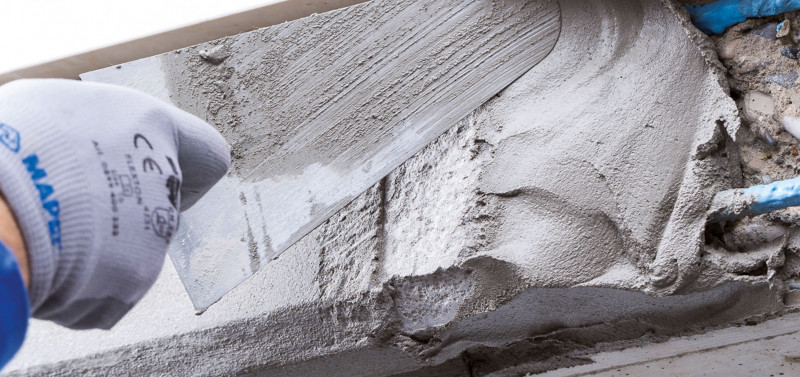-
Singapore
Copyright © 2025 Powered by BCI Media Group Pty Ltd
Confirm Submission
Are you sure want to adding all Products to your Library?
Contact Detail

Have you ever tried patching a hole in the wall and, no matter what you or your hired tradesman did, you could never get the repair mortar to finish flush with the surface? Or to dry without unsightly crack lines? If you have, you can probably blame it on wrong material selection. Knowing the differences between mortars helps you make the right choice and saves you time, effort, and expense.
“Non-shrink” grouts are commonly used for a range of concrete repair applications including patching of honeycombs, tie-bolt holes, accidental damage, break-outs, and pack-filling of gaps and voids. “Non- shrink” grouts are selected because they are seen as good quality, high-strength mortars. However, are they the right material for the work methods employed in the above repairs?
 \
\
This question can be answered by looking at two special properties of “non-shrink” grouts, and why they are important for their intended applications:
A) Shrinkage-compensation
“Non-shrink” grouts are so called because they contain additives which cause volume expansion either during the plastic stage and/or the hardening stage to counter the shrinkage that occurs when water is lost during drying; the intended result is no nett shrinkage. This property is most important for precision grouting and formwork repairs where the mixed mortar is poured or pumped into a constrained space and left to cure. The surface area of the fresh mortar exposed to air is small relative to its volume and, therefore, moisture loss during curing is well-controlled. This allows the grout to harden and gain strength without loss of volume, thereby maintaining full bearing contact with the substrate.
B) High flowability
Grouts are formulated for mixing into a fluid consistency; this enables placement by pouring or pumping in precision grouting and formwork repair applications. It must be able to flow easily pass congested spaces to fill voids completely without air entrapment. This is an important property as there is often no access to use tools to move or compact the material.
In contrast, patch repairs (also called dry pack repairs) are usually small-scale, surface repairs performed without formwork construction. In order to suit the work method, the mortars used for these applications are designed to have the following characteristics:
- Mixed to a sticky consistency to hold up well on vertical or overhead surfaces and yet creamy enough so that it can be trowel-finished,
- Resistant to drying shrinkage; surface will not crater inwards or crack on drying
(For increased cohesiveness in vertical and overhead applications, and for added crack-resistance, fibres are sometimes included in the product formulation.)
In conclusion, it is clear from the above comparison that the work method i.e. how the material is applied and the environment in which it is applied are important criteria for mortar selection and the success of the application. Additives for shrinkage-compensation and mortar fluidity add costs to the formulation of precision grouts but serve no purpose in patch repair materials. In fact, if mixed to the recommended water/powder ratios, it would be impossible to use precision grouts for patch repair applications.
Choosing the right materials for the job saves you hours of anguish and gives you better results at lower costs.



